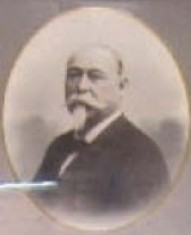
The Schneider CA 1 was the first French tank, developed during the First World War.

The Saint-Chamond, named after the commune of Saint-Chamond, was the second French heavy tank of the First World War, with 400 manufactured from April 1917 to July 1918. Although not a tank by the present-day definition, it is generally accepted and described as such in accounts of early tank development. Born of the commercial rivalry existing with the makers of the Schneider CA1 tank, the Saint-Chamond was an underpowered and fundamentally inadequate design. Its principal weakness was its Holt caterpillar tracks. They were much too short in relation to the vehicle's length and heavy weight. Later models attempted to rectify some of the tank's original flaws by installing wider and stronger track shoes, thicker frontal armour and the more effective 75mm Mle 1897 field gun. Altogether 400 Saint-Chamond tanks were built, including 48 unarmed caisson tanks. The Saint-Chamond tanks remained engaged in various actions until October 1918, belatedly becoming more effective since combat had moved out of the trenches and onto open ground. Eventually the Saint-Chamond tanks were scheduled to be entirely replaced by imported British heavy tanks.
Jean Baptiste Eugène Estienne was a general of artillery and a specialist in military engineering, one of the founders of modern French artillery and French military aviation, and the creator of the French tank arm. He is considered by many in France to be the Père des Chars.

The 1st Foreign Cavalry Regiment is the only cavalry regiment in the French Foreign Legion. As of 2009 it was the only armoured cavalry regiment of the 6th Light Armoured Brigade. The regiment recently moved camp after being stationed at Quartier Labouche for 47 years in Orange, Vaucluse, France since it moved from Mers-el-Kébir, Algeria in October 1967.

The Berliet VXB-170 is a four-wheel armoured vehicle used primarily as an Internal security vehicle. Developed and initially produced by Berliet until Berliet was merged with Saviem to form Renault Trucks, it lost to the Saviem VAB the competition to equip the French Army, even though it was cheaper than its competitor. Production stopped after less than 200 vehicles had been produced.

The Frot-Laffly armoured roller, also Frot-Turmel-Laffly armoured roller, was an early French experimental armoured fighting vehicle designed and built from December 1914 to March 1915.

The Boirault machine, was an early French experimental landship, designed in 1914 and built in early 1915. It has been considered as "another interesting ancestor of the tank", and described as a "rhomboid-shaped skeleton tank without armour, with single overhead track". Ultimately, the machine was deemed impractical and was nicknamed Diplodocus militaris. It preceded the design and development of the English Little Willie tank by six months.

The Charron, Girardot et Voigt 1902 was a French armoured car developed in 1902 by the company Charron, Girardot et Voigt. It was equipped with a Hotchkiss machine gun, and with 7 mm armour for the gunner.

The Breton-Prétot machine was an experimental wire-cutting device developed in France from November 1914. It was developed by Mr. Prétot, engineer, and Jules-Louis Breton, member of the French National Assembly.
A French historian of international relations, Dr. Thomas Gomart is Director of the Russia/NIS Center at IFRI and of the trilingual electronic collection Russie.NEI.Visions in English.
Jean-François Varlet was a leader of the Enragé faction in the French Revolution.
Michel Auguste Martin Agénor Azéma de Montgravier was a French archaeologist and soldier.
Nicolas Michelin is a French architect and urban planner. After joining forces with Finn Geipel to form LABFAC in 1985, he went on to found ANMA in 2000, which he currently runs in collaboration with his partners Michel Delplace and Cyril Trétout.

The Minerva Armored Car was a military armored car expediently developed from Minerva civilian automobiles by Belgium at the start of the First World War.

Lévis station is a ferry terminal and former railway station in Lévis, Quebec, Canada at 5995, rue Saint-Laurent. It is also served by city buses operated by the Société de transport de Lévis. The Société des traversiers du Québec operates ferry service between this terminal and downtown Quebec City.

The Réseau express métropolitain is a rapid transit system under construction in the Greater Montreal area around Montreal, Quebec, Canada. The system will link several suburbs with Downtown Montreal via Central Station. It involves the conversion of the existing Deux-Montagnes commuter rail line to rapid transit standards. A station at Montréal–Pierre Elliott Trudeau International Airport will serve as the terminus of one of the four branches.
Wolff Wilhelm Lowenthal was a Polish-born, naturalized French Doctor of Medicine.

Alexandre Mauguin was a French printer who was deputy and then senator of the department of Algiers in French Algeria between 1881 and 1894.

Marie Peltier is a Belgian historian and author, teacher at institut supérieur de pédagogie Galilée in Brussels.




















